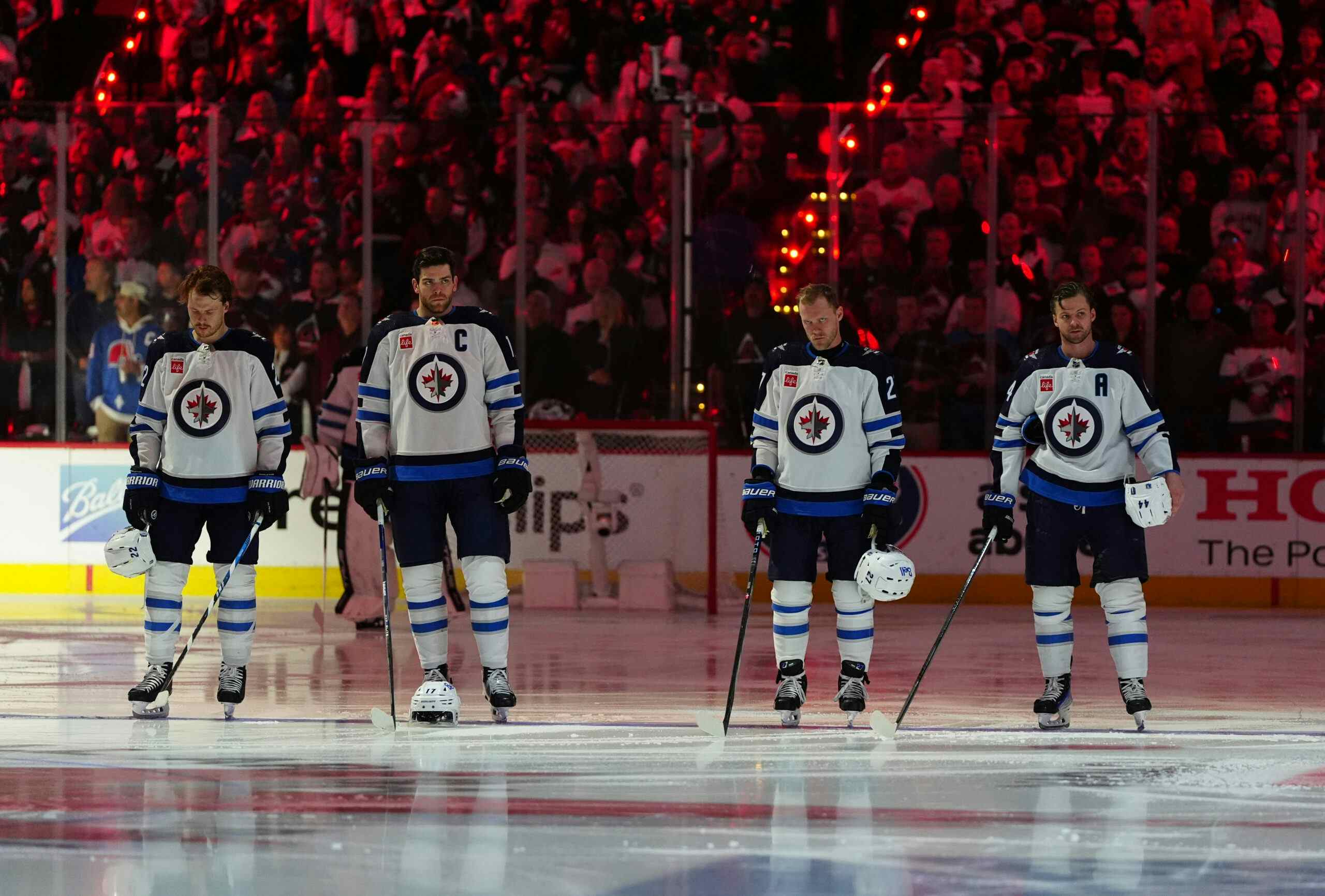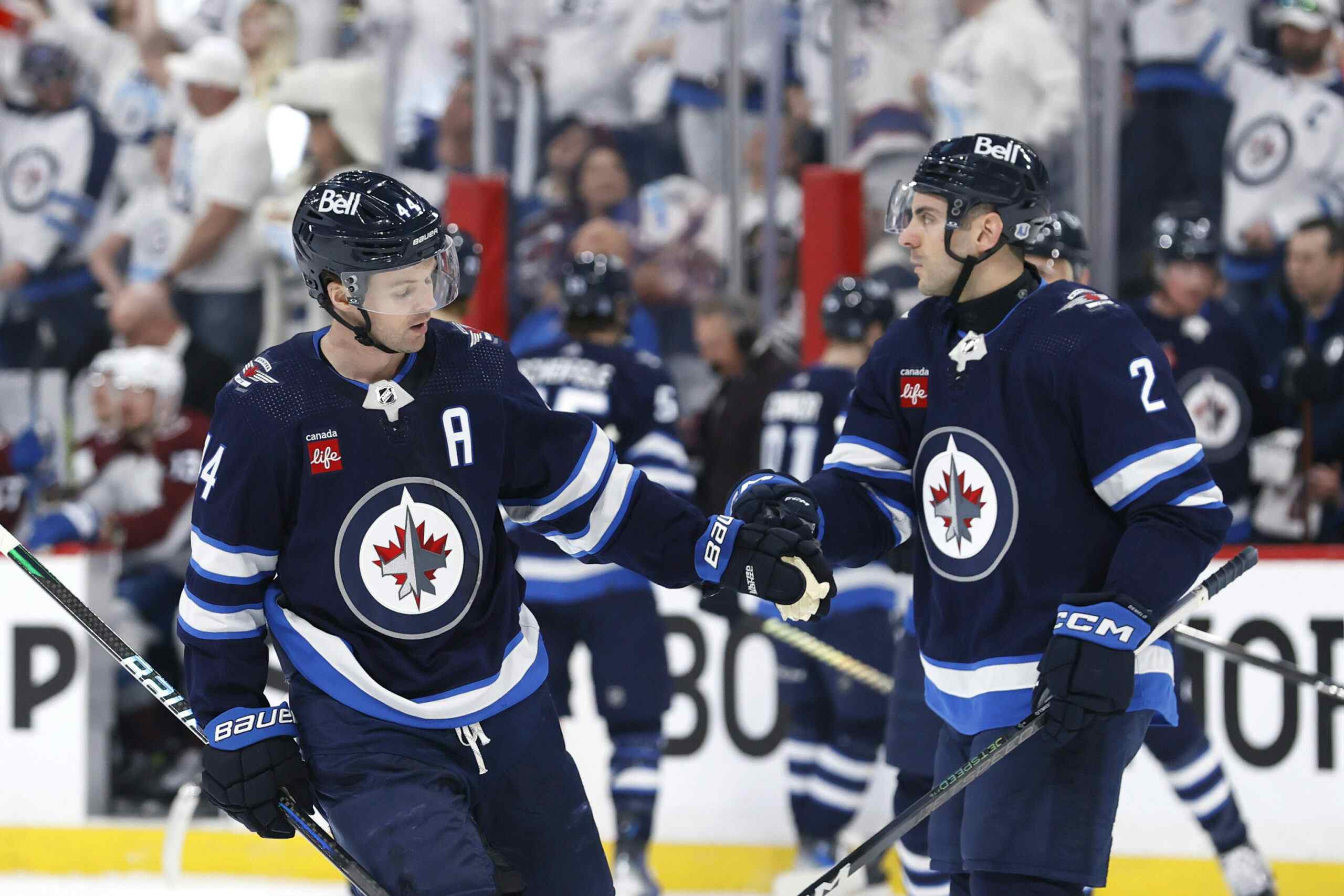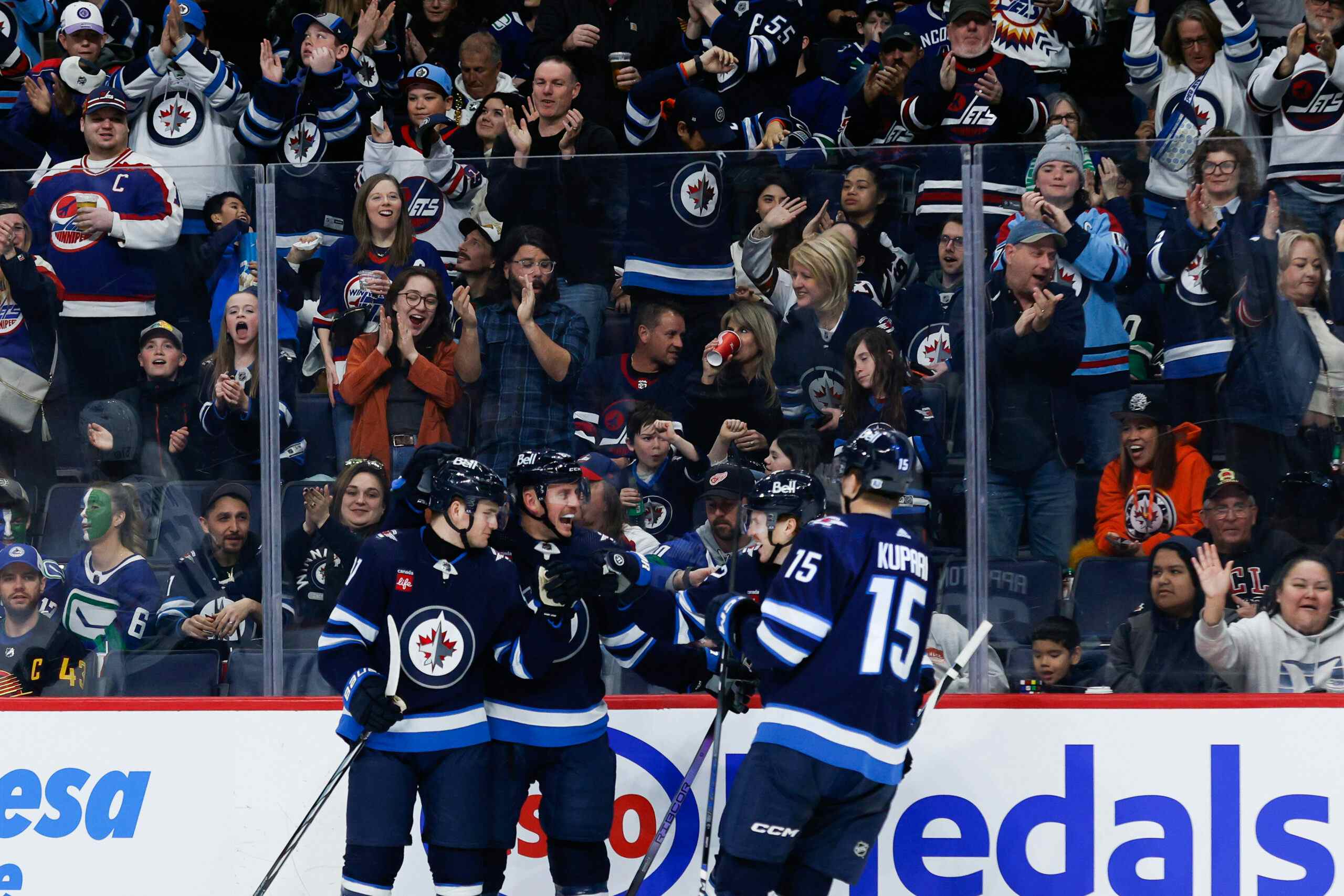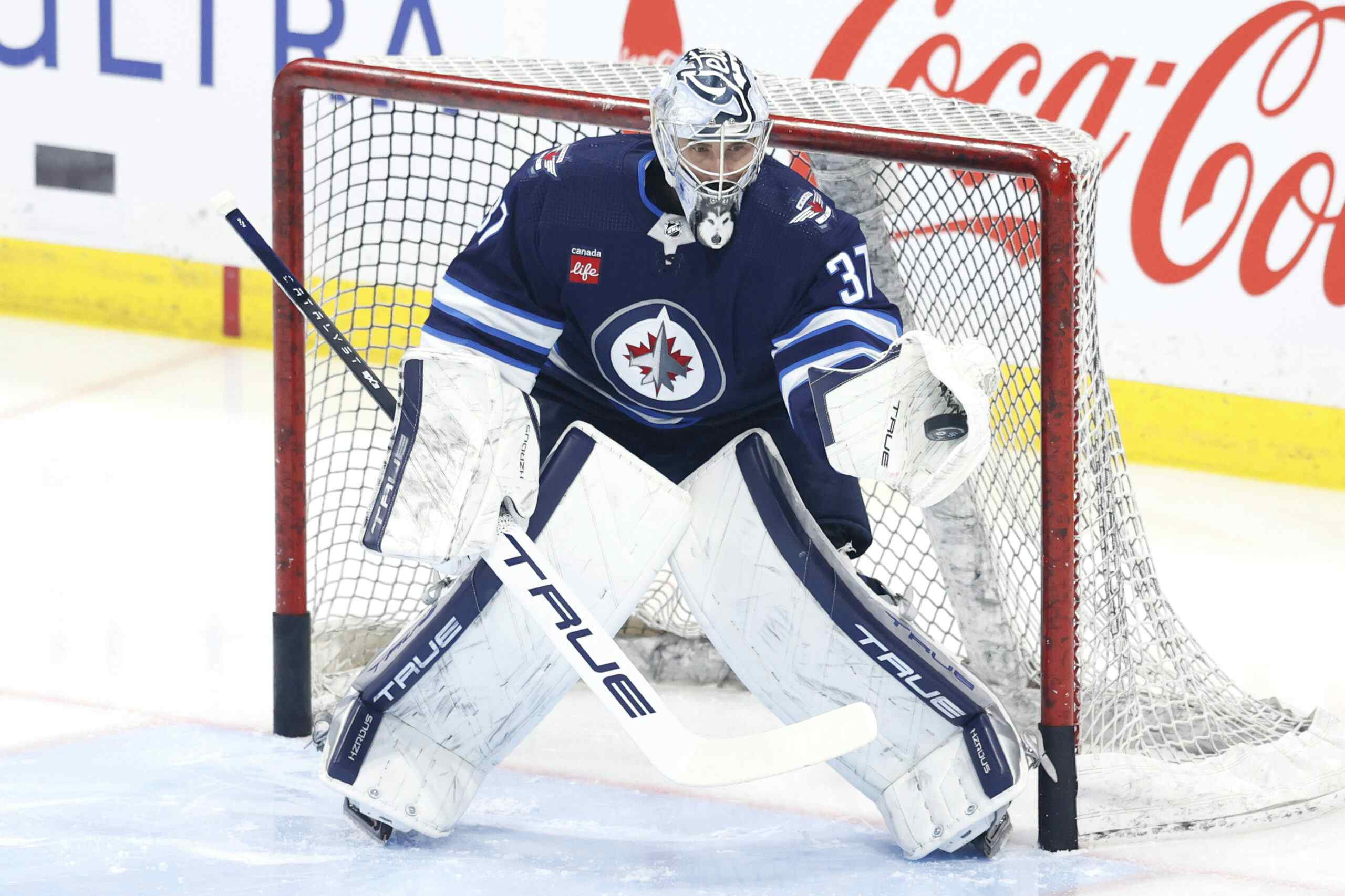Mason Brings Elite-Level Performances to the Jets
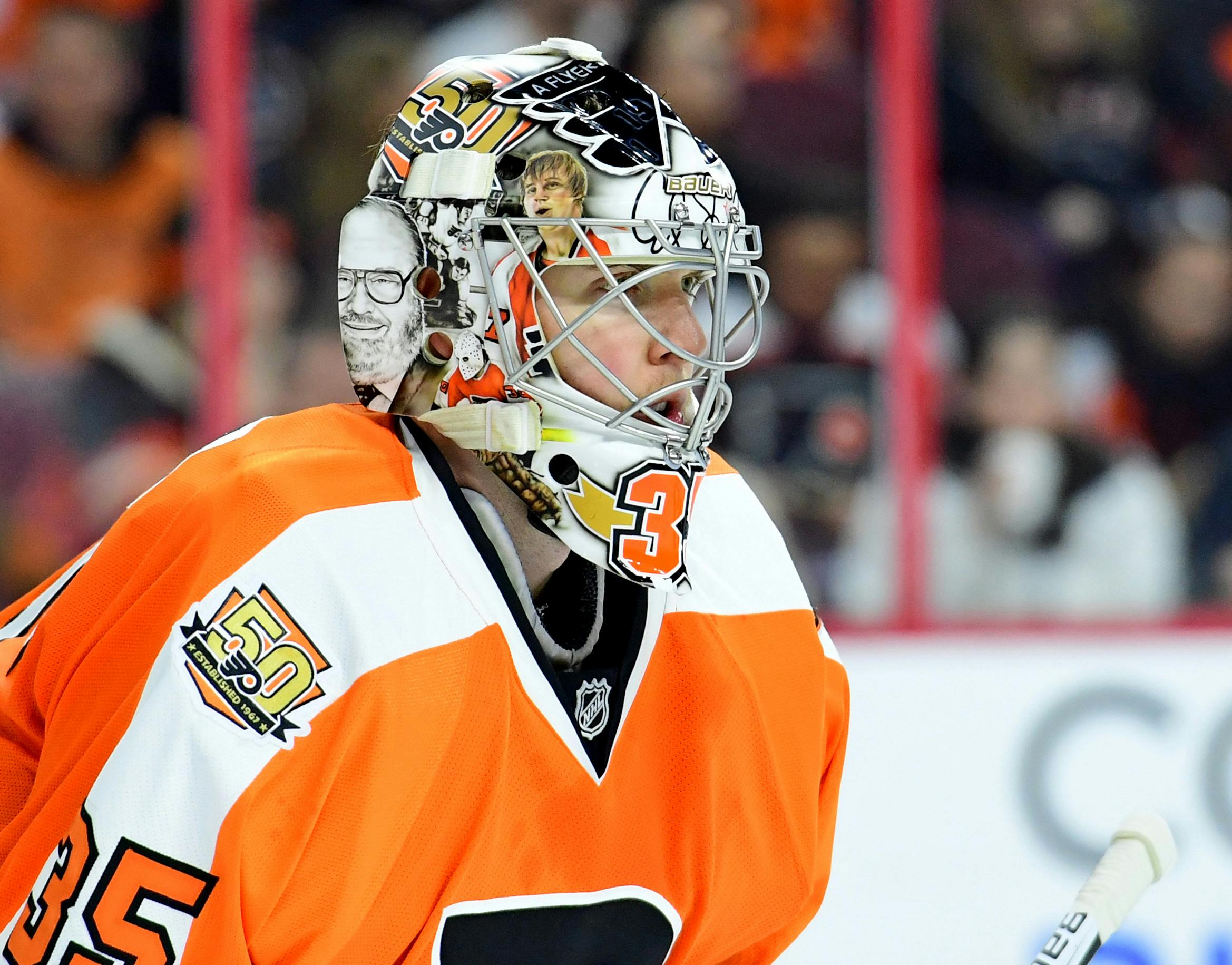
By WPGChief
6 years agoAddendum added Monday, July 3, 2017 at 1:30pm.
After the goaltending tandem of Connor Hellebuyck and Michael Hutchinson put up less-than-desirable performances in a misfortune-ridden 2016-17 season, Kevin Cheveldayoff has opted to bring in Steve Mason for veteran stability in net. Mason, who was previously with the Philadelphia Flyers and the Columbus Blue Jackets, has performed at an elite level in the past, but considerably struggled this past season. The Jets are hoping that the poor season is just an aberration, and the stats show that they may well be correct in this hope.
It has been several years since Mason broke into the league in Columbus, where he posted a .916 SV% and 2.29 GAA (these numbers and the rest in this paragraph are all-situations) going on to win the Calder Trophy and come in second for the Vezina. After that strong start (and strong finish in the 2009-10 season), he did not repeat those type of season numbers until he got to Philadelphia, where he posted a .917% in 2013-14, a .928% in 2014-15, and .918% in 2015-16. Unfortunately, and what can be eyeballed from Micah Blake McCurdy‘s Career Summary chart above, his 2016-17 season was real rough: a .908% SV% and 2.66 GAA, but part of this may be explained to his and Michal Neuvirth’s usage over the season.
(PHI goalie ice-time from HockeyViz.com)
The Flyers game-by-game history of their goalies for the 2016-17 season was interesting, to say the least. Neuvirth and Mason were going back and forth early in the season to determine who was going to be the number one, with the Flyers having a very short leash if either player did not look good early in the hockey game. “Riding the hot hand” only seemed to stop when Neuvirth was injured for 4-6 weeks and Mason was unchallenged in net. After that injury to Neuvirth on November 12th, Mason started posting better results with intermittent below-average showings with the following starting November 15th to the end of 2016 (in which Neuvirth returned shortly after):

(Mason’s 16/17 Game Log from HockeyReference.com)
Anthony Stolarz only started two games and came in relief two times during Mason’s time as undisputed starter, with the Flyers forcing Mason to start three back-to-backs. Even then, Mason seemed to regain his elite-form of his previous seasons as the Flyers’ number one netminder. Once Neuvirth returned, however, the Flyers once again returned to having Neuvirth and Mason flip-and-flop for the net, eventually signing Neuvirth to a two-year extension on March 1st and giving him more starts, before getting injured again late in the season. Many speculated that this would be the end of Mason in Philadelphia as he never seemed to be given any sort of consistency or schedule, and that this was also why he struggled during the 2016-17 season. One would imagine that with the Jets signing Mason to a two-year contract, they are giving Mason the opportunity to win the starting job and the number of games that come with it.

(SAVE by Ian Fleming from DispellingVoodoo.com)
Using Ian Fleming‘s SAVE Chart, which looks at 5v5 results over the past three seasons, we see that Mason performs well above-average in several metrics, except for High Danger Save Percentage (HDSv%) where he performed only 0.9 below the league average of 81.1. Parts of this can be explained in that he faces a bit more high danger shots per game (5.3) behind a Philadelphia blue line that is only starting to insert it’s high-level prospects, though the Jets goaltenders have faced a similar rate of high danger shots in the previous three seasons combined as well: Pavelec had 5.5, Hutchinson had 5.0, and Hellebuyck had 5.5 high danger shots per game. If the Jets defenders remain healthy and play to Paul Maurice’s system well, expect this number to go down.
Another metric to look at is the Expected Goals Saved Above Average per 48 minutes (xGSAA/48). This metric compares the actual goals allowed to the expected goals (as calculated by Corsica), in which we see Mason perform (once again) above league average with a 0.160. In comparison, Hutchinson had a -0.152 and Hellebuyck had a 0.030, meaning that Mason in the Jets’ net should likely be stopping more pucks than expected. Should the Jets shore up their defence performance from the previous season and limit high danger shots against, Mason has historically shown that he is strong at stopping pucks coming from low and medium danger zones.
What Happens to Hellebuyck and Hutchinson (and Comrie)?
For Hellebuyck, many people were ecstatic to see what he could do in a starter’s role after his impressive showing in 2015-16 during Pavelec’s injury. Unfortunately, the jump from 26 to 56 games was perhaps too much for a young goaltender, and Hutchinson’s performances in relief early on did not help as Maurice continued to push Hellebuyck, eventually starting him for a large number of consecutive games at one point.
With Mason coming in, Hellebuyck likely shifts to a backup goaltender for the 2017-18 season. He will still likely get a considerable number of games for a backup goaltender, but will have significantly less pressure and significantly more time to become the star goaltender that the Jets envision him to be. As of right now, Hellebuyck is not under contract and is a RFA with arbitration eligibility – if the Jets management truly believe him to be starting goaltender of the future, the Jets could sign him now to a longer contract for a possibly cheaper cost.
Hutchinson, after rising through several ranks to solidify himself as a solid backup goaltender in the NHL in the 2014-15 season, will likely see himself fall back down to the AHL to split time with Eric Comrie on the Manitoba Moose. To do this, he will have to go through waivers, in which 30 other teams will have the opportunity to pick him and his $1.15m cap hit, but this is now considerably unlikely as many teams participated in a goalie carousel during today’s Free Agent Frenzy.
A quick note on Comrie: he becomes eligible for waivers in the 2019-20 season, which just so happens to coincide with the expiration of Mason’s newly signed two-year contract. The jury is still out on 21-year-old Eric Comrie, whom has performed admirably behind one of the AHL’s worst teams, and the Jets will likely use the next two years to evaluate whether their future goaltending includes Comrie or not.
Closing Thoughts
Goalies are still somewhat tough to analyze, and I will respectfully admit that I am still behind on the newest trends as to how to analyze goalies and their performances. I will, however, defer to one of my favourite Hockey Twitter follows, Nick Mercadante, on his thoughts of Mason during his time in Philadelphia and what he brings to Winnipeg.
How to fix Mason’s issues during his rough start in the 2016-17 season:
On Mason’s “inconsistency”:
On what Mason can bring to the Winnipeg Jets:
https://twitter.com/NMercad/status/881158583643234304
https://twitter.com/NMercad/status/881158583643234304
Should the Jets give Mason a starting goaltender’s schedule, ideally Mason can perform like he did for his first three seasons in Philadelphia. With a goaltender that can provide elite performances, the Winnipeg Jets will be likely competing for a playoff spot in the 2017-18 season, and will be an ideal mentor to young Connor Hellebuyck.
Addendum: What About Shorthanded?
Always a worry for the penalty-plagued Winnipeg Jets (of which I will look at in the future), many have raised concerns about Mason’s historical numbers with regards to his shorthanded save percentage. They have not been particularly pretty the last few years, posting a .894%, a .845%, a .822%, and a .840% from his 2013-14 season and onward, resulting in an overall .853% during his time in Philadelphia (numbers from HockeyReference.com). For comparison, last year’s leaders in shorthanded save percentage with over 60 games played were John Gibson of the Anaheim Ducks with a .895%, Jake Allen of the St. Louis Blues with a .894%, and Devan Dubnyk of the Minnesota Wild with a .892% (numbers from FirstLineStats.com). With only one season in the past four coming close to the league’s leaders, Jets fans are understandably worried that whatever Mason brings 5v5 will not matter once the Jets inevitably take yet another penalty.
Here’s the weird thing though: shorthanded save percentage are generally unrepeatable year-to-year, or two years-to-two years. This was looked at long ago by Hawerchuk in 2010 who made this post for Arctic Ice Hockey, and came to the following conclusion:
Basically, Even-Strength save percentage, which is measured over a large number of shots, is a significant predictor of future performance, though it must be heavily-regressed to the mean save percentage. SH save percentage, on the other hand, is essentially random. Your best guess of next year’s SH save percentage is the league average. Indeed, last year’s even-strength save percentage is a much better predictor of next year’s SH save percentage than this year’s SH save percentage.
Two years later, Eric Tulsky (now with the Carolina Hurricanes) looked at whether including shorthanded save percentage with even strength save percentage would be a better predictor of future performance, and found the following:
This is consistent with the idea that PK Sv% and ES Sv% measure largely the same talent, and that the variability of the PK Sv% comes mostly from the small sample sizes. If that were the case, removing the penalty kill results would be kind of like removing the last five games of each year — the goalie’s performance in the last five games isn’t reproducible from year to year, so the data doesn’t have much value on its own, but it still helps improve the overall sample size.[…]So the overall picture then is that with small sample sizes you want to include all available data, but with large sample sizes you want to focus on the most relevant data. Tom Awad showed that overall save percentage will give the best outcomes if you are using only a single year to make your predictions. Up to about 100-150 games of career numbers, overall save percentage and even strength save percentage perform similarly. And in the long run, after 150+ games, even strength save percentage is the better predictor of a goalie’s future success.
With Mason playing 224 games in his four full seasons with the Philadelphia Flyers, we can be confident that looking at his even strength save percentage will be a strong predictor of how he will do with the Jets. Couple that with DTMAboutHeart’s recent WAR analysis of skaters in which he came to the conclusion that shorthanded defence had an “extremely minor impact and essentially zero correlation from one season to the next” and that “the best way to help their team’s penalty kill will be to not put them in that situation in the first place”, the Jets future shorthanded performances is likely impacted way more by other factors than how Mason will perform in those two-minute time spans.
Recent articles from WPGChief

